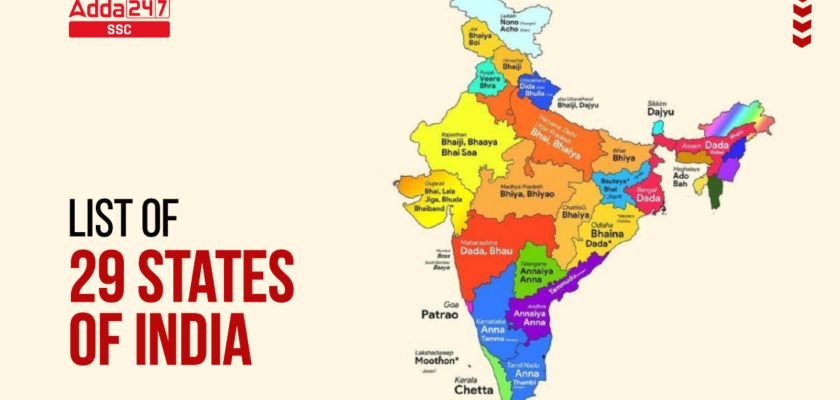List of 29 States of India
List of 29 States of India: India became a democratic republic on January 26, 1950, when it gained independence from British rule. The people of India now had the power to elect their own representatives to make decisions for the country. India is a diverse country with 29 states, each with its own capital and language. Learning about the different cultures of India is a fascinating way to experience the country.
List of 29 States of India and Capitals
India is a vast and diverse country with 29 states and 7 union territories. Each state has its own unique culture, history, and language. The capitals of the states are also home to some of the most important cultural and historical sites in India. Here is the list of the 29 Indian States and capitals that every Indian must know:
The States Reorganization Act of 1956 was a landmark legislation that reorganized the states of India along linguistic lines. The Act abolished the previous system of classifying states into Part A, Part B, and Part C, and instead created a single category of states.
The Act was passed in response to the demands of people from different linguistic groups who wanted to be able to govern themselves in their own language. The Act was also seen as a way to promote national unity by reducing the number of princely states and bringing them under the control of the central government.
The Act has been amended several times since it was passed, and new states have been created in accordance with the linguistic principle. In 2000, three new states were created: Chhattisgarh, Jharkhand, and Uttaranchal. In 2014, Telangana was created from Andhra Pradesh.
The States Reorganisation Act has had a significant impact on the political and social landscape of India. It has helped to promote national unity and to ensure that the voices of all linguistic groups are heard.
States and Union Territories of India
India is a union of states and in the states, the Governor, as the representative of the President, is the head of the Executive. The system of state government closely resembles that of the Union. The boundaries of Indian states are reorganized on a linguistic basis by the States Reorganization Act, of 1956. Union Territories are administered by the President through an Administrator appointed by him/her. Each State/UT of India has its unique demography, history and culture, language, dress, festivals, etc. This article will answer all your questions and clear all your doubts related to the states and capitals of India.
Source link

